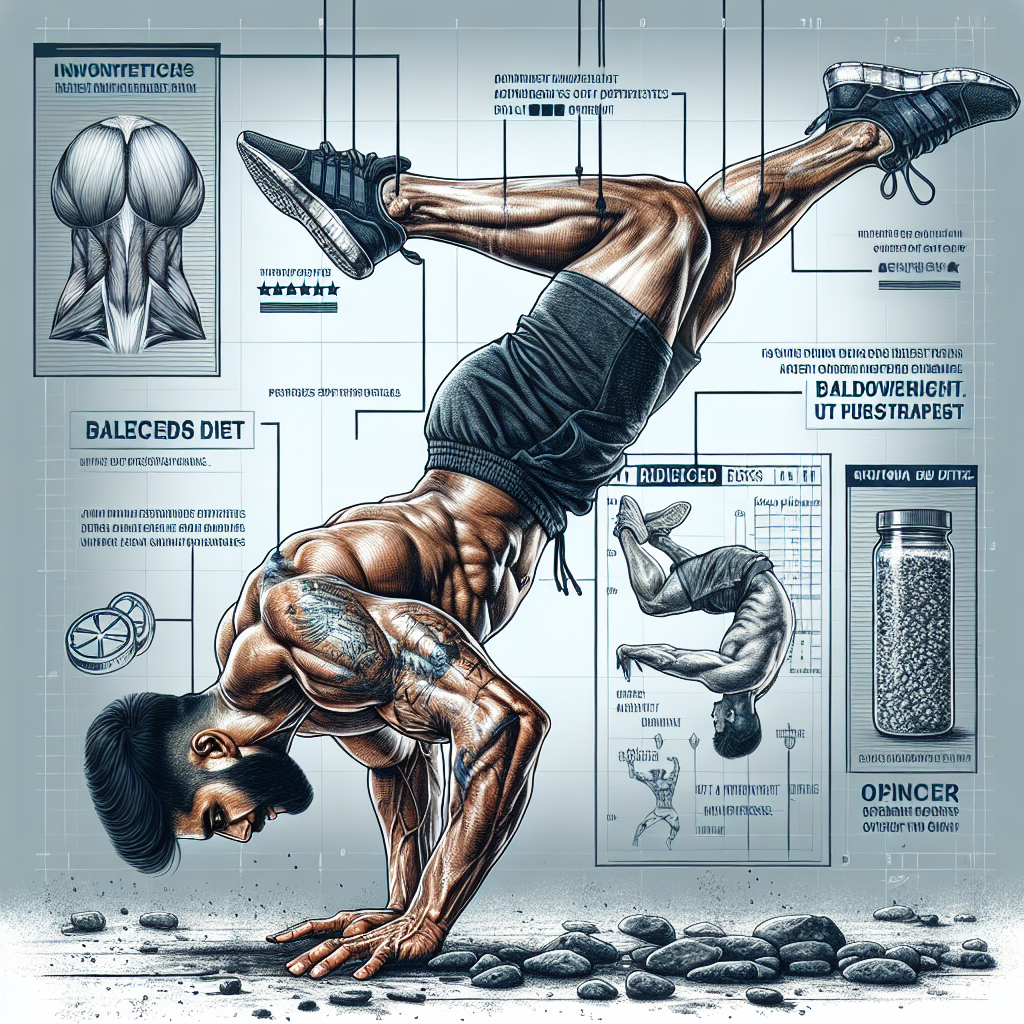Muscle Building Guide: How to Build Muscle Mass with Calisthenics
In the journey to sculpt a better body, you’re about to gain perspective on how to build muscle mass solely through calisthenics – a natural, effective and versatile fitness approach. The spectrum of calisthenics spans from basic exercises like push-ups to more advanced routines such as handstands. Simplicity doesn’t equate to easiness, nor does it mean you won’t get a serious workout that’ll challenge every fiber of your muscles. The piece “Muscle Building Guide: How to Build Muscle Mass with Calisthenics” takes you through a laid out plan, from understanding the fundamental principles to unveiling effective techniques, ensuring you harness the real power of calisthenics in your muscle-building voyage. Unleash your potential today and redefine what your body is capable of. So, let’s get started!

Understanding Calisthenics
Definition of Calisthenics
For the uninitiated, calisthenics is a form of exercise that mainly relies on your body weight and gravity to build strength. Rather than pumping iron or using fancy gym equipment, you’re using your body to pull, push, jump, squat, and much more. Often associated with athletes and professional trainers, calisthenics is applicable for anyone, regardless of their fitness goals or current fitness level.
Key Principles of Calisthenics
Like all fitness regimens, calisthenics also has a few guiding principles. First off, it emphasizes compound movements that work many muscles at once, over isolated exercises. Think pull-ups, dips, squats, they all involve several muscle groups. Another fundamental aspect is balance and control. As opposed to simply pushing weights, you must rely on your body’s balance to conduct movements. Lastly, the focus is on steady progression – each session aims at increasing the intensity in a structured way, pushing your body to perform just a bit better.
Benefits of Calisthenics
Calisthenics comes with a slew of benefits. Firstly, it promotes functional fitness. That means you are training your body for daily life activities, not just for lifting heavy weights. You’ll notice improved strength, agility, balance, and flexibility. Plus, since your own body weight is your resistance, you can do these workouts virtually anywhere. Another major plus is the joint-friendly nature of calisthenics, as compared to heavy weightlifting.
Mechanics of Muscle Building
The Basics of Building Muscle
When you work out, your muscle fibers tear a bit. Although that sounds a bit scary, it’s a good thing. The real magic happens during recovery when the body repairs these tears, making the muscles stronger and larger than they were before – a process known as hypertrophy.
Hypertrophy and Calisthenics
Enter calisthenics. With this bodyweight training, you can trigger hypertrophy, but how? The concept is simple. When you provide resistance (your body weight, in this case) to muscles, it causes minor tears in the muscle fibers. The body uses protein to repair these micro-tears, leading to muscle growth.
The Role of Protein in Muscle Building
The importance of protein in muscle building can’t be overstated. Proteins are key players in the repair and growth process post-exercise. Consume a balanced and protein-rich diet to fuel your muscles for growth and speed up recovery.

Smooth Transition into Calisthenics
Switching from Traditional Workouts
When shifting from classic gym workouts to calisthenics, start slow. Your body isn’t used to these movements, and going all in from day one increases injury risks. Instead, introduce bodyweight exercises gradually into your routine.
Adapting to the New Training Routine
Change can be tough, especially when your body is conditioned to a certain kind of exercise. Give yourself time to adapt. One way to do this is by combining calisthenics with your existing routine. As your comfort and skill improve, you can gradually increase your calisthenics training.
Mitigating the Risk of Injury
Safety is paramount. Correct technique and form are your best bets against potential injuries. Start with basic movements before blindly jumping into complex exercises. A little extra time learning the ropes can save you from a nasty setback later on.
Creating a Calisthenics Workout Plan
Identifying Fitness Goals
Before getting started, decide what you want to achieve. Are you looking to lose weight, gain muscle, improve endurance, or all three? Your goals will drive the design of your workout plan.
Designing the Right Schedule
Once you have clear goals, design a workout schedule. Remember, consistency is more important than duration. It’s better to work out for 30 minutes every day than to exercise for three hours once a week. Ensure your workout plan fits into your daily routine.
Balancing Workouts for Full Body Training
Calisthenics targets the entire body. Ensure your workout plan includes exercises for all major muscle groups. Balancing your workouts helps avoid muscle imbalances, promotes overall strength, and ensures a well-rounded physique.

Calisthenics Exercises for Muscle Building
Push-Up Variations
Push-ups are a common calisthenics exercise that target your chest, shoulder, and tricep muscles. They come in many forms, including classic push-ups, clapping push-ups, and decline push-ups each posing a different level of challenge.
Pull-Up and Chin-Up Variations
Using a bar, tree branch, or even a sturdy door frame, pull-ups, and chin-ups work the width and density of your back muscles. When done correctly, they also work your biceps and forearm muscles.
Bodyweight Squats and Lunges
Squats and lunges are great moves for your lower body, working everything from calves to glutes. These exercises can be performed with variations to ramp up the intensity.
Core Strengthening Exercises
Exercises like planks, leg raises, and mountain climbers strengthen your entire core region. A strong core enhances stability, improves balance, and amps up your overall strength.
Maximizing Muscle Growth with Advanced Calisthenics
Increasing Workout Intensity
As you get comfortable with basic exercises, gradually step up the intensity. This can be done by increasing the volume of training, reducing rest periods, or introducing harder variations. Remember, pushing your body beyond its comfort zone triggers muscle growth.
Introducing Progressive Overload
Progressive overload is a powerful tool in muscle development. It means gradually increasing the stress placed on your muscles over time. In calisthenics, you can achieve this by gradually increasing the reps, sets, or intensity of your workouts.
Leveraging Eccentric Training
In eccentric training, you slow down the lowering phase of an exercise. This puts more tension on your muscles, forcing them to work harder, therefore promoting muscle growth.
Implementing High Intensity Interval Training (HIIT)
HIIT is an advanced training technique where you give all-out, one-hundred percent efforts during quick, intense bursts of exercise, followed by short recovery periods. This type of training gets your heart rate up and burns more fat in less time.

Nutrition and Muscle Building
Importance of Proper Nutrition
You can’t out-exercise a poor diet. Nourishing your body with nutrient-dense foods is essential to fuel your workouts and recovery.
Fueling the Body Pre and Post Workout
Eat balanced meals before and after workouts. Going into a workout starving or on a full stomach can affect your performance. Similarly, post-workout meals are crucial to recover and build muscle.
Key Nutrients for Muscle Growth
Aside from protein, other nutrients are vital for muscle growth too. Carbs are essential for energy, healthy fats help with hormone production, and certain vitamins and minerals support muscle function and recovery.
Tips for Staying Motivated
Setting Achievable Goals
Setting unrealistic expectations can lead to disappointment and lack of motivation. Stay motivated by setting goals that are challenging yet achievable.
Keeping a Workout Journal
Log your workouts. This way, you can track your progress, find patterns, and modify your plan as needed. Recording your progress can serve as a great motivational tool.
Seeking Support from a Fitness Community
Find a group of likeminded individuals who are also interested in calisthenics. The motivation, support, and friendly competition you gain from a community can keep you consistent and committed.

Common Misconceptions about Calisthenics
Debunking the Myth of Weight Lifting Superiority
Some believe that weight lifting is superior for muscle gain. While it’s true that lifting heavier weights can lead to greater muscle growth, that doesn’t make calisthenics any less effective. With the right technique, diet and consistency, you can build muscle with calisthenics.
Addressing Concerns about Injury Risk
Like any form of exercise, calisthenics also carry a risk of injury if conducted with poor form or no preparation. But when performed correctly, calisthenics tends to be more joint-friendly than many gym exercises.
Dispelling Fears about Difficulty Levels
Just because you see athletes doing advanced moves doesn’t mean calisthenics is not beginner-friendly. Everyone starts somewhere. Even if you can’t do a single pull-up or push-up now, with consistent practice, you can get there.
Frequently Asked Questions about Muscle Building with Calisthenics
How Long Does it Take to Build Muscle with Calisthenics?
Building muscle isn’t a process that happens overnight, regardless of the exercise regimen. Be patient, and with consistent workouts and proper nutrition, you will see progress over time.
Is it Possible to Build Muscle with Only Calisthenics?
Absolutely. As highlighted earlier, calisthenics exercises cause stress to your muscles leading to the generation of micro-tears. They are then repaired post exercise, leading to muscle growth.
What are the Best Calisthenics Exercises for Bulking Up?
Compound exercises like pull-ups, push-ups, dips, and squats that work on multiple muscles simultaneously are typically the most effective for bulking up.
Do you Need Supplements for Building Muscle with Calisthenics?
Supplements are not a necessity but can aid in muscle growth and recovery when used in conjunction with a balanced diet. However, always consult a health professional before starting any supplement regimen.


Pingback: Mastering the Basics: A Guide on How to Build Muscle Mass in Legs – Lose Weight With Absolute Minimal Diet – Your All In One Guide to Weight Loss & Nutrition